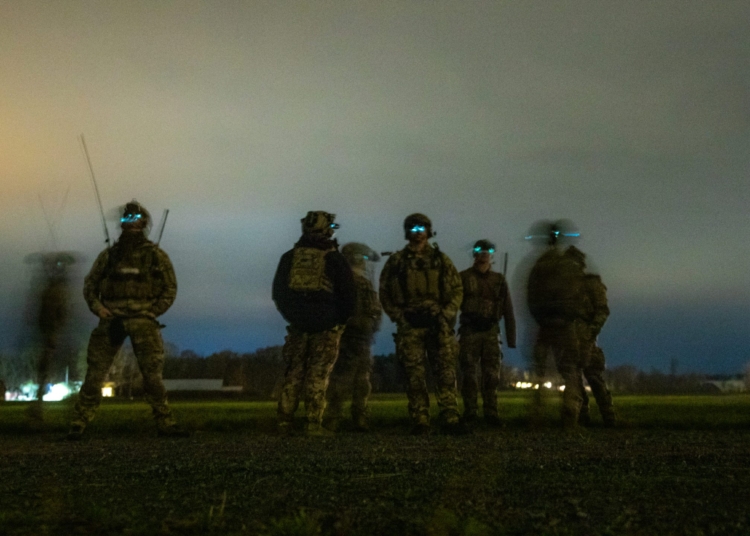This comprehensive guide provides an in-depth look into the United States Army, the largest branch of the U.S. Armed Forces. It explores the size, structure, and missions of the Army. As of 2021, the Army has an authorized end strength of approximately 485,000 active-duty soldiers, but when considering the total Army, including the National Guard and Reserve, the force size amounts to over one million individuals. The Army is organized into several components, including the Active Duty Army, Army National Guard, and Army Reserve, each with its own distinct function and responsibilities. The Army’s missions include warfighting, defense of the nation, peacekeeping and humanitarian assistance, military support to civil authorities, and training and readiness. With its diversified structure, the United States Army is capable of executing its missions to protect and defend the nation’s interests.
A Comprehensive Guide to the United States Army: Size, Structure, and Missions
Introduction
The United States Army, the largest branch of the U.S. Armed Forces, plays a vital role in defending the nation’s interests and safeguarding its security. This comprehensive guide provides an in-depth look into the size, structure, and missions of the United States Army.
Size of the United States Army
The size of the United States Army fluctuates based on the needs and priorities of the nation. As of 2021, the Army has an authorized end strength of approximately 485,000 active-duty soldiers. This number includes officers, enlisted personnel, and warrant officers. However, when considering the total Army, including the Army National Guard and the Army Reserve, the force size amounts to over one million individuals.
The United States Army has a robust recruitment process to maintain its force levels. Young men and women who meet the eligibility criteria, including physical fitness standards and educational requirements, can join the Army and undergo basic training before being assigned to their specific roles.
Structure of the United States Army
The United States Army is organized into several components, each with its own distinct function and responsibilities. These components include:
Active Duty Army
The Active Duty Army is the main component of the Army and consists of soldiers who are full-time, active-duty personnel. These soldiers are stationed worldwide and are readily available for deployments to various regions and theaters.
Army National Guard
The Army National Guard serves as a reserve component of the Army, with both federal and state roles. Guard soldiers can be called upon to provide assistance during domestic emergencies, such as natural disasters, as well as deploy overseas to support military operations. The National Guard operates under the command of both the federal government and state governors.
Army Reserve
The Army Reserve, another reserve component of the Army, is made up of part-time soldiers who generally serve one weekend a month and two weeks during the summer. They can also be activated for deployments to support active-duty troops during times of conflict or other operational requirements.
Missions of the United States Army
The United States Army is responsible for a wide range of missions, all aimed at protecting and advancing U.S. interests. Some of the key missions of the Army include:
Warfighting
The primary mission of the United States Army is to fight and win the nation’s wars, serving as the dominant land force in major conflicts. The Army is equipped with a vast array of weaponry, vehicles, and advanced systems to carry out this mission effectively.
Defense of the Nation
Along with the other branches of the U.S. Armed Forces, the Army plays a crucial role in defending the nation against external threats. This includes ensuring the security of U.S. territory, defending allies, and deterring aggression from adversaries.
Peacekeeping and Humanitarian Assistance
The United States Army is often called upon to participate in peacekeeping missions around the world. Soldiers are deployed to maintain stability, promote peace, and provide humanitarian assistance in regions affected by conflicts or natural disasters.
Military Support to Civil Authorities
The Army also provides support to civil authorities during emergencies and crises within the United States. This entails assisting with disaster response, providing logistical support, and aiding law enforcement agencies when necessary.
Training and Readiness
The Army places great emphasis on training and readiness to ensure its soldiers are prepared for any mission. Training programs cover a wide array of skills, including combat tactics, physical fitness, leadership development, and technical training specific to various Army occupational specialties.
Conclusion
The United States Army plays a critical role in protecting and defending the nation’s interests. With its diversified structure, ranging from the Active Duty Army to the Army National Guard and Reserve, the Army is capable of executing its missions across different theaters and scenarios. The Army’s size, structure, and missions underscore its commitment to maintaining the security and well-being of the United States and its allies.













